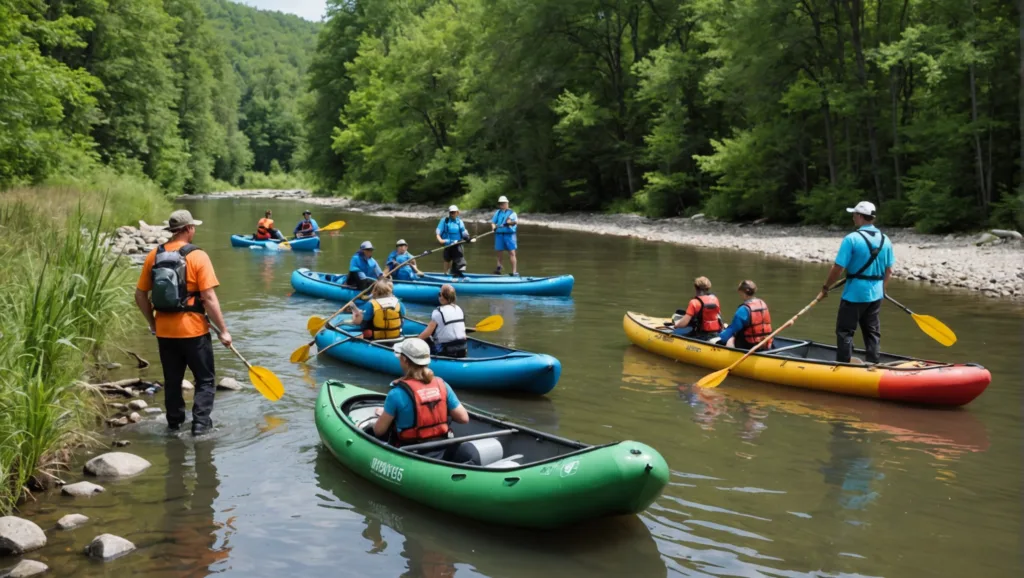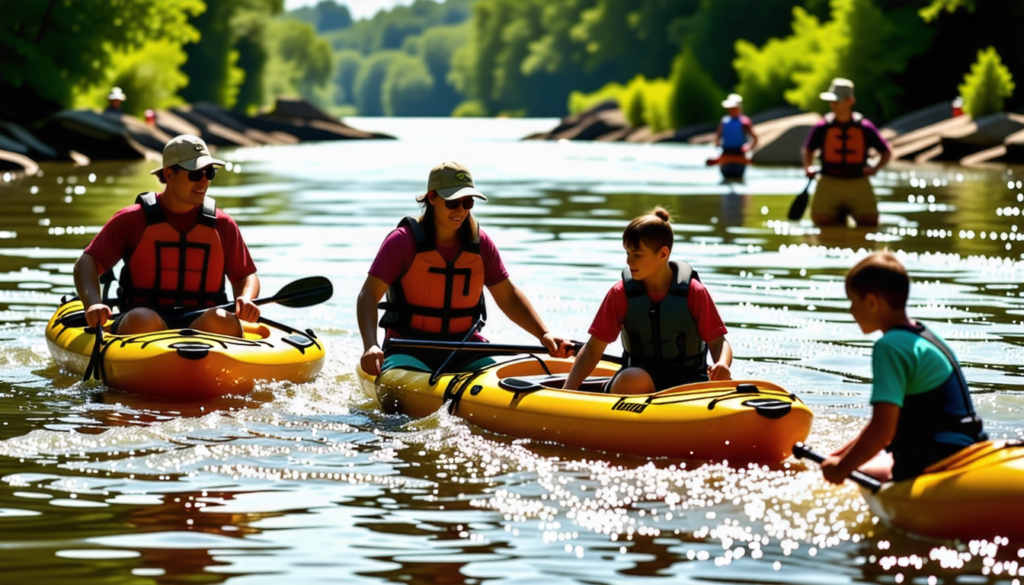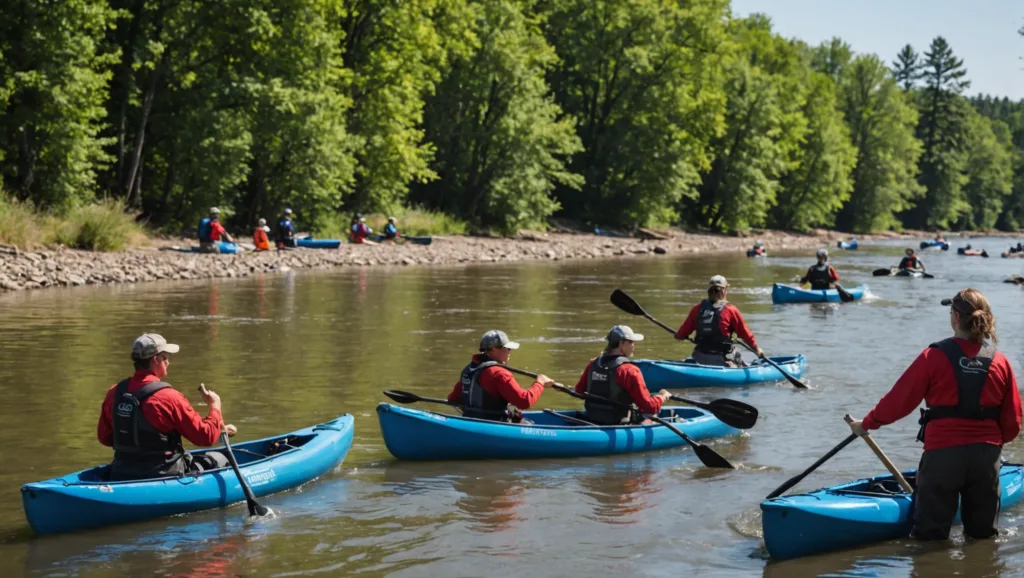Table Of Contents
Why Environmental Initiatives Matter for Paddlers
The Role of Local Organizations
Local organizations play a critical role in promoting environmental initiatives that directly benefit paddlers. They often lead grassroots efforts to clean up waterways and restore habitats. These groups not only enhance the natural beauty of paddling locations but also improve the overall health of ecosystems. Many local organizations host events that bring the paddling community together for both recreational and conservation purposes. By participating in these events, paddlers can actively contribute to the preservation of their favorite waterways. In addition to hands-on conservation work, local organizations often serve as educational hubs for paddlers. They provide workshops and resources on sustainable practices, helping paddlers minimize their environmental impact while on the water. These resources can include information about responsible waste disposal and the importance of respecting wildlife habitats. By fostering a strong sense of community and awareness, local organizations empower paddlers to become stewards of the environment. This is an essential article for anyone looking to learn more about the topic.
Collaborating for Effective Environmental Solutions
Paddling organizations often partner with local environmental groups to amplify their impact. These collaborations can lead to successful initiatives that address issues like water pollution and habitat preservation. By pooling resources and knowledge, both parties can create programs that cater to their specific needs while fostering a greater sense of community stewardship. In many cases, shared events such as river clean-ups and educational workshops provide excellent opportunities for engagement. Participants gain hands-on experience and develop a deeper understanding of local ecosystems. This collective effort not only enhances the natural environment but also cultivates a culture of responsibility among paddlers, ensuring that they play an active role in safeguarding their waterways.
Understanding Climate Change Effects
Climate change has considerable implications for natural water bodies, affecting their ecosystems and the overall paddling experience. Increased temperatures contribute to alterations in water quality. Paddlers often encounter lower oxygen levels in lakes and rivers during warmer months. These changes can lead to harmful algal blooms, posing risks to health and wildlife. Additionally, shifting weather patterns influence water levels, creating challenges for accessing popular paddling routes. Droughts can lead to lower water levels, making certain areas impassable, while heavy rainfall may result in swift currents and increased debris. Understanding these environmental changes equips paddlers with the knowledge to navigate safely and responsibly in their chosen waterways.Rising Water Levels and Paddling Safety
Rising water levels pose significant challenges to paddlers. Increased precipitation and melting glaciers contribute to higher river and lake levels, altering currents and impacting navigation. Paddlers may encounter submerged obstacles that are typically visible during normal conditions. A sudden change in water depth can lead to dangerous situations, making it essential for paddlers to stay informed about local water conditions and understand the risks associated with this evolving landscape.
Educating Future Generations
Nurturing a sense of responsibility towards the environment in young paddlers is essential for sustaining the ecosystems they enjoy. Local clubs and organizations can play a vital role by offering age-appropriate educational programs. These initiatives can incorporate fun, interactive activities that engage children and teach them the significance of conservation. From organizing river clean-ups to hosting workshops on local wildlife, these experiences can instill a deep appreciation for nature. As young paddlers absorb these lessons, they become ambassadors for environmental stewardship in their communities. Parents can further support this education by encouraging involvement in outdoor activities that emphasize environmental care. Through these shared experiences, children can learn valuable skills while developing a lifelong commitment to protecting the waterways they paddle. Fostering this connection between youth and nature lays the groundwork for a more environmentally conscious generation.Teaching Environmental Stewardship to Young Paddlers
Instilling a sense of responsibility toward the environment in young paddlers creates a foundation for future stewards of nature. Engaging children in hands-on experiences can foster a deeper appreciation for waterways and ecosystems. Activities like river clean-ups or guided nature walks allow them to witness firsthand the impacts of pollution and habitat loss. By connecting them emotionally to these natural spaces, their commitment to protecting them grows.
FAQS
Why are environmental initiatives important for paddlers?
Environmental initiatives are crucial for paddlers as they help preserve waterways, ensure safe paddling conditions, and promote sustainable practices that protect natural habitats, enabling both current and future generations to enjoy these environments.How can local organizations contribute to environmental initiatives for paddlers?
Local organizations can play a significant role by organizing clean-up events, advocating for policy changes, and educating paddlers about best practices for protecting waterways, ultimately fostering a community dedicated to environmental stewardship.What are the effects of climate change on paddling activities?
Climate change can lead to rising water levels, altered weather patterns, and increased water temperatures, which can affect the safety, accessibility, and overall enjoyment of paddling activities.How do rising water levels impact paddling safety?
Rising water levels can lead to stronger currents, submerged hazards, and unpredictable water conditions, which can pose risks to paddlers and necessitate increased caution and awareness when navigating affected areas.Why is it important to educate future generations about environmental stewardship in paddling?
Educating future generations about environmental stewardship fosters a sense of responsibility and awareness regarding the preservation of natural resources, ensuring that young paddlers understand their impact on the environment and are equipped to continue sustainable practices in the future.Related Links
Review of Popular Online Paddling Forums Why Paddler Spotlights Are Important for the CommunityNina Jerkovic
Nina Jerkovic is a passionate whitewater enthusiast with extensive experience in kayaking and rafting. She shares her knowledge on water safety, gear, and navigating challenging rivers, inspiring adventurers to explore new waterways. Nina’s love for the sport and the outdoors makes her a trusted voice in the whitewater community.



